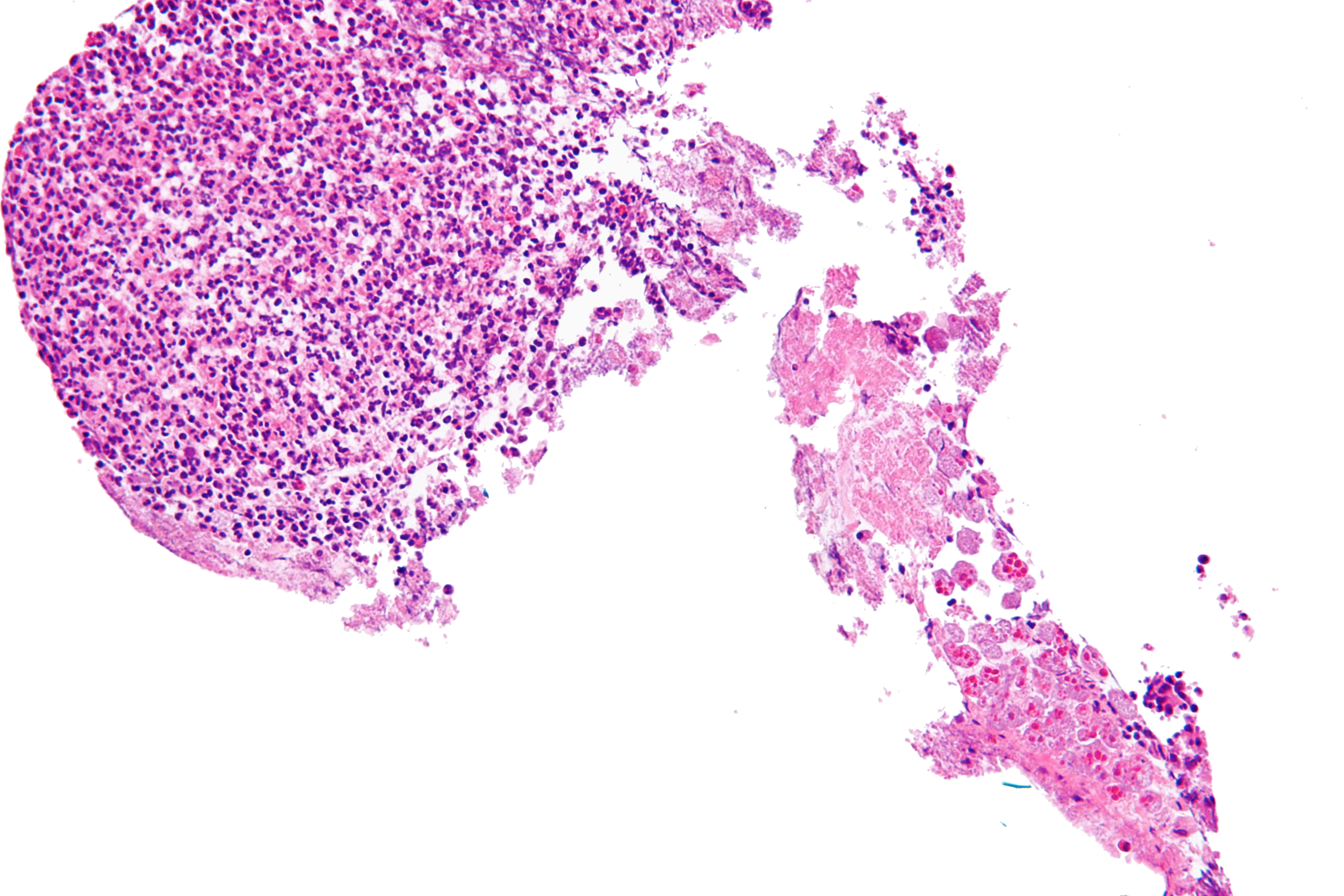Satrogyl, Satranidazole
- Introduction to Satrogyl (Satranidazole)
- Mechanism of Action: How Satrogyl Works
- Dosage and Administration Guidelines
- Therapeutic Uses of Satrogyl
- Off-Label Uses of Satrogyl
- Satrogyl Composition and Formulations
- Storing Satrogyl: Best Practices
- Drug Interactions: What to Watch Out For
- Warnings and Contraindications
- Satrogyl in Special Populations
- Side Effects of Satrogyl
- Warnings and Contraindications
- Satrogyl in Special Populations
- Side Effects of Satrogyl
Introduction to Satrogyl (Satranidazole)
Overview and Significance
Satrogyl, which is also known as Satranidazole brings a perspective to the field of antimicrobial treatment. It has gained recognition in the community for its ability to target various protozoal infections effectively.
With its effectiveness in fighting conditions like amebiasis and giardiasis, Satrogyl plays a role, in combating illnesses caused by protozoa.
Brief History of Satrogyl Development
Satrogyl was created as a result of a scientific effort to address the limitations of current antiprotozoal medications. Its development began with research, in pharmacology, which led to the discovery of a compound that combined effectiveness and safety.
Throughout the years its progress has demonstrated our growing knowledge of protozoal disease mechanisms and How to treat them effectively.
Chemical Composition and Properties
- Satrogyl, a compound with a chemical structure derived from nitroimidazole possesses properties due to its unique molecular arrangement.
- This design allows it to effectively enter cells and enhance its ability to eliminate protozoa.
- Additionally the drug demonstrates stability ensuring its long-lasting therapeutic effects, in the body's natural conditions.
Mechanism of Action: How Satrogyl Works
Pharmacodynamics: Interaction with Pathogens
Satrogyl's approach is a combination of molecular interactions and cellular processes. When the drug is given it enters the protozoan cell. Undergoes a biochemical change.
This change produces substances that disrupt the pathogen's ability to synthesize nucleic acids ultimately leading to their destruction.
This targeted interference is what makes Satrogyl effective, against a range of protozoal infections.
Bioavailability and Metabolic Pathways
The way Satrogyl is absorbed by the body ensures that it is well distributed and reaches the bloodstream effectively when taken orally.
In the liver, it goes through a regulated metabolic process transforming into metabolites that still have some of the original compound's ability to fight protozoa.
This complex metabolic process helps maintain a balance, between effectiveness and possible side effects ensuring optimal therapeutic outcomes while minimizing potential harm.
Resistance and Sensitivity Patterns
Ongoing research is focused on understanding how microbial resistance and sensitivity to Satrogyl are affected. It is worth noting that Satrogyl has shown effectiveness against various protozoan species, which speaks to its strong mechanism of action.
However, it is important to be cautious in using this medication as resistance can still occur, albeit rarely. Monitoring patterns of resistance and sensitivity is crucial to ensure that Satrogyl remains a tool, in combating protozoal diseases.
Dosage and Administration Guidelines
Standard Dosage for Different Age Groups
The Satrogyl dosing schedule is carefully designed to meet the requirements of different age groups prioritizing safety and effectiveness.
For adults, the recommended dosage falls within a range that is adjusted based on the severity of the infection.
When it comes to children the dosage is meticulously calculated to maintain a delicate balance between efficacy and safety for this vulnerable population.
Following the prescribed dosages diligently is crucial, in order to achieve the desired results.
Adjustment in Special Populations
- In order to ensure safety it is important to make dosage adjustments for individuals with kidney problems to prevent the risk of buildup and potential harm.
- Likewise for those, with liver issues, it is necessary to modify dosing schedules considering their changed ability to metabolize medications.
- When dealing with patients it is crucial to thoroughly evaluate their kidney and liver function before determining the right dosage that will be both effective and well tolerated.
Administration Techniques and Best Practices
The usual way to take Satrogyl is by mouth. It is recommended to drink enough water when taking the medication. It's important to follow the timing for doses so that the drug levels in your body stay at their best.
Even if your symptoms go away early it's advised to complete the course of therapy to avoid developing resistance. Additionally, it's crucial to consult healthcare professionals before making any changes to your medication routine ensuring effective use of Satrogyl.
Overall Satrogyl plays a role in managing protozoal infections and reflects the complexities of modern pharmaceuticals in terms of its development, mechanism of action, and administration guidelines.
As medical science progresses drugs like Satrogyl will continue to be crucial, in addressing disease challenges.
Therapeutic Uses of Satrogyl
Primary Indications and Efficacy
Satrogyl, a pharmaceutical breakthrough in the field of antimicrobial agents is primarily used to treat specific infections caused by protozoa. Its effectiveness in managing conditions like amebiasis and giardiasis has been extensively documented, showing a rate of success in eliminating these harmful microorganisms.(1)
Moreover, the drug's strong ability to combat bacteria expands its range of therapeutic applications making it a versatile choice, for healthcare professionals. In clinical settings, Satrogyl has demonstrated impressive outcomes by significantly reducing the associated illness burden caused by these infections.
1. NCBI - Antimicrobial resistance of the enteric protozoon Giardia duodenalis – A narrative review
Spectrum of Activity: Infections Treated
- Amebiasis(1); Satrogyl is a medication that effectively treats amebiasis, which is caused by Entamoeba histolytica. It provides relief from symptoms and helps combat the infection effectively.

Amebiasis under the microscope
- Giardiasis(2); This drug has proven to be effective in treating giardiasis an illness caused by Giardia lamblia, a type of protozoan.

Giardiasis under the microscope
- Other Infections; Additionally Satrogyl is used to manage infections caused by anaerobic bacteria. This showcases its range of activity, against various types of infections.
1. NCBI - Amebiasis
2. NCBI - Giardiasis
Comparative Effectiveness with Other Antimicrobials
In studies comparing treatments, Satrogyl has been shown to be more effective than certain traditional antimicrobials, especially in treating infections caused by protozoa. Its unique way of working which focuses on disrupting the production of acids in pathogens makes it highly effective in specific situations where other drugs may not work as well.(1)
Additionally Satrogyl's favorable characteristics in terms of how the body absorbs and processes it contribute to its increased effectiveness. While resistance to Satrogyl is less common compared to some antimicrobials it is crucial to use it responsibly to avoid the development of resistance. Overall Satrogyl stands out as an effective treatment option for specific protozoal infections and can even surpass the effectiveness of other antimicrobial agents in some cases.
To conclude the significance of using Satrogyl in managing diseases is evident. Its ability to effectively treat a range of protozoal infections and its advantages over antimicrobials solidify its position as a valuable treatment choice. As healthcare professionals continue their fight against infectious diseases, medications like Satrogyl play a vital role, in improving patient outcomes and enhancing healthcare quality.
1. NIH - Benign sacrococcygeal teratomas in infants and children: a 25 year review.
Off-Label Uses of Satrogyl
Exploring Unapproved but Common Practices
Satrogyl, although primarily prescribed for treating protozoal infections has witnessed a surge in usage which demonstrates its perceived flexibility within the medical community. These unapproved uses arise from real-world observations and the practical needs of practice.
In situations, doctors have opted to use Satrogyl for conditions that are not officially approved motivated by its effectiveness, against a wide range of pathogens, and its positive safety record. This phenomenon highlights the evolving nature of healthcare decision-making that often goes beyond traditional limitations.
Case Studies and Research Findings
- There have been a number of instances where Satrogyl has been used effectively in treating infections that go beyond its approved usage when standard treatments have not been successful.
- Although the research findings are preliminary they show results, in these off label applications, which has sparked more interest and investigation into the drugs potential.
- It is important to note however that these studies often involve groups of participants and lack the thoroughness of large scale clinical trials so it is necessary to interpret their findings with caution.
Expert Opinions and Recommendations
Medical experts recognize the potential of using Satrogyl for off-label purposes but emphasize the importance of an approach. They suggest that such usage should be based on clinical judgment supported by emerging evidence and always prioritizing patient safety.
Healthcare professionals agree on the necessity for research to validate these unapproved applications ensuring their effectiveness and safety. In the meantime, informed consent and thorough monitoring are emphasized by the community when utilizing Satrogyl off-label to prevent unforeseen complications.
In summary, the off-label utilization of Satrogyl showcases a blend of innovation and patient care. While these applications offer hope in challenging scenarios they also require a balanced approach that combines empirical evidence with professional discretion.
As research progresses in this field it has the potential to expand Satrogyls indications enhancing its capabilities and reinforcing its role, in modern medicine.
Satrogyl Composition and Formulations
Active and Inactive Ingredients
The effectiveness of Satrogyl is credited to its component, Satranidazole which acts as a powerful antimicrobial agent. Alongside this ingredient, there are several other inactive ingredients included in the formulation.
These additional components serve as excipients. Contribute to the drug's stability, bioavailability, and overall patient acceptance. Some of these excipients may consist of stabilizers, fillers, and flavoring agents.
Careful consideration is given to selecting each ingredient to ensure that the medication achieves therapeutic effectiveness while maintaining a safe profile.
Available Forms: Tablets, Suspensions, etc.
Satrogyl is widely accessible in the form of tablets providing an accurate way to administer the dosage. Additionally, for children or individuals who have trouble swallowing, there is an option available, in the form of a suspension making it easier to administer and ensuring better adherence. The different formulations of Satrogyl offer flexibility in treatment catering to the requirements of diverse patient groups.
Brand Variants and Generic Options
Although Satrogyl can be found under brand names all versions of the medication meet strict quality standards to ensure consistent effectiveness and safety.
The introduction of options has increased the availability of this medication providing a more affordable choice for both patients and healthcare systems.
The wide range of brand and generic alternatives highlights the drug's established role in protocols, across different healthcare environments.
Storing Satrogyl: Best Practices
Ideal Storage Conditions
It is extremely important to store Satrogyl in order to maintain its effectiveness and extend its shelf life. The medication should be kept at room temperature away, from sunlight and moisture as these factors may affect its stability. Following these storage guidelines is vital to preserve the drug's qualities and ensure the safety of patients.
Shelf Life and Expiry Considerations
Satrogyl usually remains effective for years as stated on the packaging. It is important for patients to follow the expiration date as, after that point, the medication may not work effectively and could potentially be unsafe.
Disposal and Environmental Concerns
We should responsibly dispose of any unused Satrogyl according to local guidelines for medication disposal.
By following disposal practices we can prevent potential environmental contamination and reduce the risk of accidental exposure or misuse.
Taking care of the environment in this way shows our commitment, to health and safety overall.
Drug Interactions: What to Watch Out For
Common and Serious Drug Interactions
Satrogyl has the potential to interact with medications, which could affect how well it works or increase the chances of experiencing negative effects.
It is important for healthcare professionals to carefully review a patient's medication history in order to identify and address any interactions ensuring that the treatment achieves the best results possible.
Food and Beverage Interactions
Certain types of food and drinks have the potential to impact how Satrogyl is absorbed and metabolized.
For example, it is recommended to avoid consuming alcohol while undergoing treatment with Satrogyl as it could worsen any side effects or reduce the effectiveness of the medication.
It is advisable for patients to discuss any dietary restrictions or adjustments with their healthcare provider while, on Satrogyl therapy.
Interactions with Other Health Conditions
When using Satrogyl in patients who already have liver or kidney issues it's important to be cautious. These conditions can affect how the drug is processed and eliminated from the body. In some cases adjustments to the dosage or considering alternative treatments might be necessary to make sure that both safety and effectiveness are maintained.
It's crucial for healthcare professionals and patients to conduct an evaluation of each patient and develop a personalized treatment plan when using Satrogyl in these situations. To ensure that Satrogyl is used safely and effectively healthcare professionals and patients should have an understanding of its composition, storage recommendations, and possible interactions, with other drugs.
This knowledge will help maximize the benefits of Satrogyl while minimizing any potential risks.
Warnings and Contraindications
Absolute Contraindications
Satrogyl should not be used by people who have previously experienced a hypersensitivity reaction to Satranidazole or any other medications similar to nitroimidazole.
It is also not recommended for patients with a known history of blood dyscrasias as it could worsen these conditions.
Being aware of these contraindications is essential, in order to avoid the possibility of adverse reactions.
Potential Risks and Adverse Reactions
- Neurological Responses; Satrogyl has the potential to cause neurological effects such as dizziness and seizures, particularly in individuals who already have existing neurological conditions.
- Gastrointestinal issues; It is common to experience symptoms like nausea, vomiting, and diarrhea when taking Satrogyl. It's important to monitor and manage these symptoms.
- Liver-related concerns; Patients, with liver problems should exercise caution when using Satrogyl as it may lead to increased liver enzyme levels and liver damage.
Special Warnings for Specific Populations
Certain groups of people need to be given attention when using Satrogyl. Patients with kidney problems may require adjustments, in their dosage to avoid buildup and harmful effects.
It's also important to be cautious when prescribing Satrogyl to individuals who have a history of alcohol abuse as using it alongside Satrogyl might cause a reaction to disulfiram.
Healthcare professionals should carefully consider the pros and cons before deciding whether or not to prescribe Satrogyl to these patients.
Satrogyl in Special Populations
Administration to the Elderly
Caution should be exercised when using Satrogyl in patients as they are more likely to have accompanying liver, kidney or heart issues along with other existing medical conditions or medications.
It may be necessary to adjust the dosage or increase the time, between doses.
Use in Pregnant Women and Nursing Mothers
The safety of Satrogyl during pregnancy and breastfeeding has not been determined. It should only be used in women if absolutely necessary after carefully weighing the potential risks and benefits.
Nursing mothers may need to choose between discontinuing the medication or ceasing breastfeeding considering how important the medication is, for them.
Pediatric Use: Safety and Efficacy
Although Satrogyl could potentially be prescribed to patients for certain reasons it is important to note that its safety and effectiveness have not been fully established for all conditions in children.
When determining the dosage, for patients it is crucial to carefully consider their weight and the severity of their condition.
Additionally, close monitoring should be implemented to address any potential adverse reactions that may occur.
Side Effects of Satrogyl
Common Side Effects: Identification and Management
Gastrointestinal problems such as feeling sick throwing up and having diarrhea are quite common. Can usually be dealt with by making changes, to your diet or using treatments that target the symptoms.
If you experience headaches and feeling dizzy it's important to avoid driving or operating machinery and it would be wise to inform patients about this precaution.
Rare but Serious Adverse Effects
Serious but uncommon side effects may include liver damage, neurological symptoms such, as seizures, and severe allergic reactions. It is important to seek medical attention if you experience these adverse effects.
Reporting Side Effects: Procedures and Importance
Patients need to be advised to inform their healthcare provider if they experience any reactions. It's important to report any side effects so that we can keep track of the safety profile of Satrogyl.
This information is crucial for healthcare providers to make informed decisions about adjusting treatments and for regulatory bodies to update guidelines and recommendations.
To summarize although Satrogyl is an antimicrobial agent it's important to carefully consider the warnings, contraindications, and potential side effects when using it, especially in special cases.
Staying vigilant in monitoring and reporting reactions plays a vital role, in ensuring patient safety and achieving optimal therapeutic outcomes.
Warnings and Contraindications
Absolute Contraindications
When it comes to Satrogyl it's really important to consider the contraindications in order to safeguard the well-being of patients. People who have experienced hypersensitivity to Satranidazole or other similar nitroimidazole derivatives should avoid using this medication.
Moreover, it's not recommended for individuals, with a documented history of blood dyscrasias as Satrogyl may worsen these conditions and potentially result in complications.
Potential Risks and Adverse Reactions
- Neurotoxicity; Patients might encounter side effects, such as nerve damage and seizures especially when the medication is used for an extended period.
- Hepatotoxicity; The functioning of the liver might be negatively impacted, It is important to regularly monitor liver enzyme levels during long term treatment.
- Gastrointestinal issues; It is common for patients to experience symptoms, like queasiness throwing up, and diarrhea. These symptoms can be managed with treatment.
Special Warnings for Specific Populations
People who have existing liver or kidney diseases need to be cautious when using Satrogyl. In these situations, it might be necessary to make changes, to the dosage or consider other treatment options to prevent the worsening of these conditions.
Healthcare providers should carefully evaluate the risks and benefits before deciding to prescribe Satrogyl to these patients.
Satrogyl in Special Populations
Administration to the Elderly
When giving Satrogyl to patients doctors need to take into account the higher chances of having liver, kidney, or heart problems at the same time and make appropriate changes to the dosage.
Older patients may also be more prone, to experiencing effects so it's important to closely monitor them throughout their treatment.
Use in Pregnant Women and Nursing Mothers
The safety of using Satrogyl during pregnancy and breastfeeding has not been definitively established. As a result, it should only be prescribed to nursing mothers if the potential benefits outweigh the potential risks to the unborn baby or infant. It is crucial to evaluate the patient's condition and consider any potential effects of the medication, in these situations.

Pregnant Woman
Pediatric Use: Safety and Efficacy
The safety and effectiveness of Satrogyl may differ in patients depending on the child's age and developmental stage. It is important to adjust the dosage and consider the potential benefits in comparison to the risks.
Close monitoring, for any effects is highly important when dealing with this vulnerable group.
Side Effects of Satrogyl
Common Side Effects: Identification and Management
Gastrointestinal problems like feeling sick throwing up and having stools are often mentioned but they can usually be taken care of with the right medical help.
Feeling lightheaded and having headaches might happen so patients should avoid activities that could be dangerous, like driving or using machinery.
Rare but Serious Adverse Effects
Serious but uncommon adverse effects of Satrogyl may include allergic reactions, acute pancreatitis, and Stevens-Johnson syndrome.
If you suspect any of these reactions it is important to seek medical attention as they can pose a life-threatening risk.
Reporting Side Effects: Procedures and Importance
Patients should be encouraged to communicate any side effects they experience while taking Satrogyl. It is important for their safety. Also contributes to a better understanding of the drug's safety profile. Healthcare providers should educate patients about the importance of reporting side effects.
Provide guidance on how to do so emphasizing that this information helps ensure safe medication practices. To summarize while Satrogyl is a medication for specific infections it is crucial for healthcare providers to have a comprehensive understanding of its contraindications potential side effects and special considerations, for different patient populations. This knowledge allows them to safely prescribe and manage Satrogyl therapy tailoring treatment based on patient needs and ultimately achieving the best possible outcomes.







